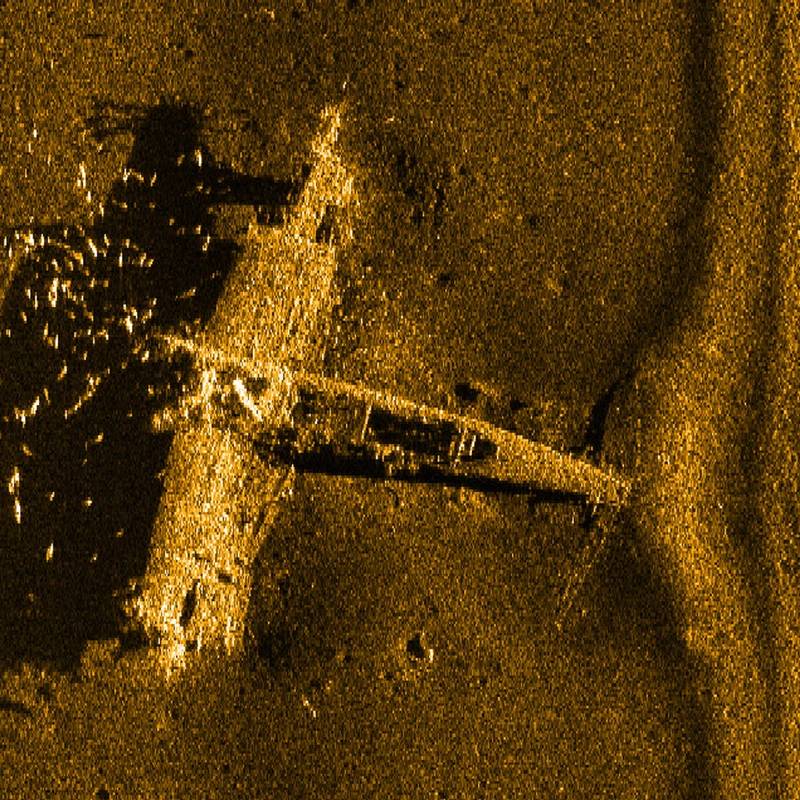The REMUS Legacy: Celebrating 20+ years of REMUS
With more than 500 REMUS UUVs deployed worldwide, HII reflects on its 20-year legacy.
Duane Fotheringham, President, Unmanned Systems Huntington Ingalls Industries, Technical Solutions
HII’s REMUS 300 is a small class, open architecture unmanned underwater vehicle with advanced modularity.
Image courtesy of Huntington Ingalls IndustriesThe Early Days
REMUS is an acronym coined by the original founders from WHOI: “Remote Environmental Monitoring UnitS.” Original development began in 1993 with funding from the Office of Naval Research, and the first vehicle was completed in 1995. The first prototype was a scientific instrument used to collect oceanographic data. It was innovative technology for the time; tethered systems were common, but untethered robotics were in their infancy, and autonomy consisted of primitive deterministic algorithms. The risk of putting a system in the ocean was high, and at the time REMUS didn’t have a GPS antenna or robust acoustic communications to aid in recovery.
The integration of side scan sonar transformed REMUS from a purely scientific platform to a defense survey tool. Using sonar, REMUS could map the ocean floor and assist navies with mine countermeasure (MCM) operations. Before UUVs, MCM operations were conducted with towed sonars, handheld sonars or marine mammals. REMUS presented an alternative to putting humans in harm’s way, with the ability to operate longer and cover more ground. REMUS could also be deployed en masse, covering larger areas more quickly than other survey methods. When a GPS antenna was added, it became much easier to locate the vehicle and increased the navigational accuracy.

REMUS 300 sonar imagery of a plane wreck.
REMUS for Defense Applications
In 2002, the first international order for REMUS (built by Hydroid) was placed by the United Kingdom for two vehicles. The Ministry of Defence began fielding these vehicles for MCM operations and have acquired several REMUS UUVs since then. The two original vehicles, named Amy and Jessica, have been upgraded three times and are still in operation today.
In 2003, REMUS became the first UUV in history to be used in combat by the U.S. Navy during Operation Iraqi Freedom. REMUS surveyed the Strait of Hormuz and the Port of Umm Qasr to ensure they were free of naval mines. This proof of concept in a combat environment paved the way for future U.S. defense UUV programs.
REMUS later became the first UUV to have a program of record with the U.S. Navy. The Littoral Battlespace Sensing Autonomous Underwater Vehicle (LBS-AUV) contract reached milestone C, full rate production, in 2013. These vehicles are used to collect meteorological and oceanographic data to enhance the fleet’s decision-making. In 2012, MK18 Mod 2 UUVs were deployed to the Fifth Fleet to meet an “urgent operational need” as part of the U.S. Navy’s Fast-Lane program. This MCM program of record reached milestone C in 2016 and remains one of the Navy’s most successful UUV programs with thousands of hours fielded.
REMUS isn’t only a U.S. Navy asset, having been sold to 25 allied countries worldwide. The most common defense applications for REMUS include mine countermeasures, hydrographic survey and search operations. REMUS is often used in naval exercises around the world, facilitating interoperability between the U.S. Navy and our allies’ MCM operations.
The newest REMUS variant is already making a splash in the defense industry. In 2020, we delivered a REMUS 300 prototype to the U.S. Navy for evaluation for the Small-class UUV contract. In 2021, New Zealand became the first international customer for the REMUS 300, ordering four to support its MCM operations.
REMUS for Commercial Applications
While REMUS has been used extensively in the defense sphere, it hasn’t left its scientific roots behind. There are many academic institutions and commercial companies who use REMUS for more scientific means, whether it be measuring plankton, tracking giant squid, following great white sharks or discovering the locations of ship and plane wrecks.
The REMUS 6000 can operate at a maximum depth of nearly four miles, which means nearly 99% of the ocean is accessible to this vehicle. This makes REMUS uniquely suited for search and recovery operations at significant depths. It has been used by customers to survey the Titanic, search for Amelia Earhart, locate the wreckage of Air France Flight 447, and discover the location of the “holy grail of shipwrecks,” the San Jose, with cargo believed to be worth billions of dollars.
The late Paul G. Allen’s research vessel Petrel is equipped with a REMUS 6000 that has assisted his team in locating many famous World War II wrecks from 2017 to 2019, including the USS Indianapolis, USS Lexington, USS Wasp, USS Juneau, IJN Kaga and IJN Akagi. In fact, they located the deepest shipwreck ever discovered with their REMUS in 2019 when they surveyed what they believe is the USS Johnston at a depth of 6,220 meters.
Looking Forward
No other UUV can boast such a long and robust history, but the REMUS today is not the same REMUS that came out of WHOI back in the 1990s. Thousands of improvements to design, sensors and autonomy have produced one of the most advanced UUVs in the world. The new-generation systems follow Unmanned Maritime Autonomy Architecture (UMAA) and Modular Open Systems Architecture (MOSA) standards, combining open architecture, advanced modularity and the latest autonomy. Advances in artificial intelligence and machine learning will revolutionize the use of unmanned systems, and we’re actively integrating complex capabilities like multi-vehicle collaborative autonomy and autonomous health monitoring. These advances will ensure REMUS can be relied on for the next 20 years, demystifying the secrets of the ocean and aiding navies worldwide in protecting the seas.